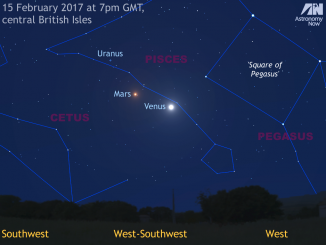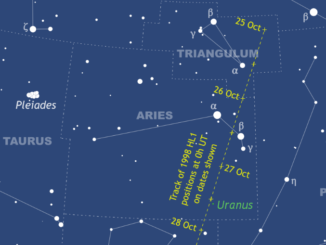
A pretty rare observational event visible across the whole of the UK, a planet occulted by the Moon, occurs on the early-evening of 5 December when the Moon moves over Uranus, the ice-giant seventh planet. This will be Uranus’ second occultation event visible from the UK this year, following September’s episode.
Uranus, shining at magnitude +5.7, is currently well-placed in the evening sky among the stars of Aries (1.5° south-south-east of magnitude +5.3 pi Arietis), having been at its opposition best just last month.
The good news is that a humble pair of 10 x 50 binoculars is all that’s required to view this exciting occultation, with Uranus’ disappearance and reappearance observable with the Moon at a comfortable altitude.
Uranus moves behind the dark limb of a 94.3-per cent-illuminated waxing gibbous Moon at 4.45pm GMT from London, 4.49pm in Birmingham, 4.52pm in Manchester and 4.59pm from Edinburgh. Uranus and the Moon are rising in the eastern sky and lay around 20 degrees high at occultation time.
The Moon reappears at the Moon’s bright limb at about 5.20pm and 5.22pm from London and Edinburgh, respectively.
Why not spend some time observing Uranus after the occultation is over? It’s observing circumstances from UK shores are improving year-on-year as it appears higher in the northern sky. With its declination now a favourable 16 degrees north for observers from mid-northern latitudes, Uranus climbs to a pleasing altitude of 50 degrees or so when it culminates (crosses the southern meridian at its peak altitude) at about 10pm GMT.
Uranus is an easy capture through a pair of 10 x 50 binoculars, while a telescope in the 80–100mm (~three- to four-inch) aperture class, giving a magnification of at least 100x, can show its 3.7-arcsecond-diameter blue-green disc.



